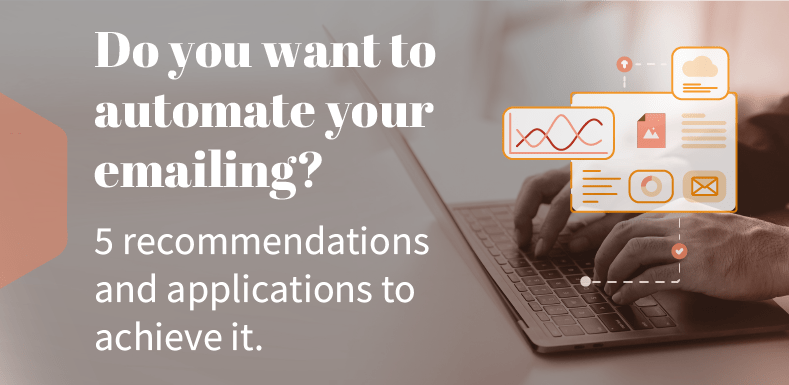
Emails are one of the most crucial communication channels in the business world. Whether it’s for reaching out to customers or coordinating with colleagues, email is a valuable tool. However, manually sending and responding to emails can be time-consuming and inefficient. This is where email automation comes in. By automating your email communication, you can save time and improve your workflow. In this article, we’ll explore five recommendations and applications to achieve email automation.
#1 Use an email marketing service
Email marketing services are a popular option for automating email campaigns. With an email marketing service, you can schedule and send emails to a targeted list of subscribers. Many services also offer automated workflows that trigger specific emails based on subscriber behavior, such as signups or purchases. Start automating your email campaigns with the help of industry favorites like Mailchimp, Constant Contact, and Campaign Monitor.
#2 Set up filters and rules
Email filters and rules are features included in most email clients that allow you automate email sorting and organizing. You can create rules that automatically move certain emails to a specific folder or label, mark them as important, or even delete them. By setting up filters and rules, you can keep your inbox organized and recover the precious time you waste sorting through irrelevant emails.
#3 Use templates
Email templates are pre-designed email formats that can be customized and reused for specific purposes. By using templates, you can save time and ensure consistent messaging across your emails. Many email clients offer built-in templates, but you can also create your own using a drag-and-drop email builder. Some popular email template tools you can try are HubSpot, Brevo, and Stripo.
#4 Automate your responses
Automating email responses is another way to save time and improve efficiency. Email autoresponders are pre-written messages that are sent automatically in response to specific triggers, such as a new subscriber or an out-of-office message. By setting up autoresponders, you can ensure that your recipients receive a timely response even when you’re unavailable.
#5 Use email tracking and analytics
Email tracking and analytics tools provide insights into your email campaigns’ performance, with metrics like open rates, click-through rates, and conversion rates. By analyzing this data, you can identify areas for improvement and optimize your email campaigns for better results. Get acquainted with email tracking and analytics with widely used tools such as Google Analytics, Litmus, and Mailtrack.

Conclusion
In conclusion, automating your email communication can save time and improve efficiency in your business operations. By implementing these five recommendations and applications, you can automate your emailing and streamline your workflow. Whether you’re resorting to email marketing services, filters and rules, templates, automated responses, or tracking and analytics, there’s a wide variety of available options to help you achieve email automation.






